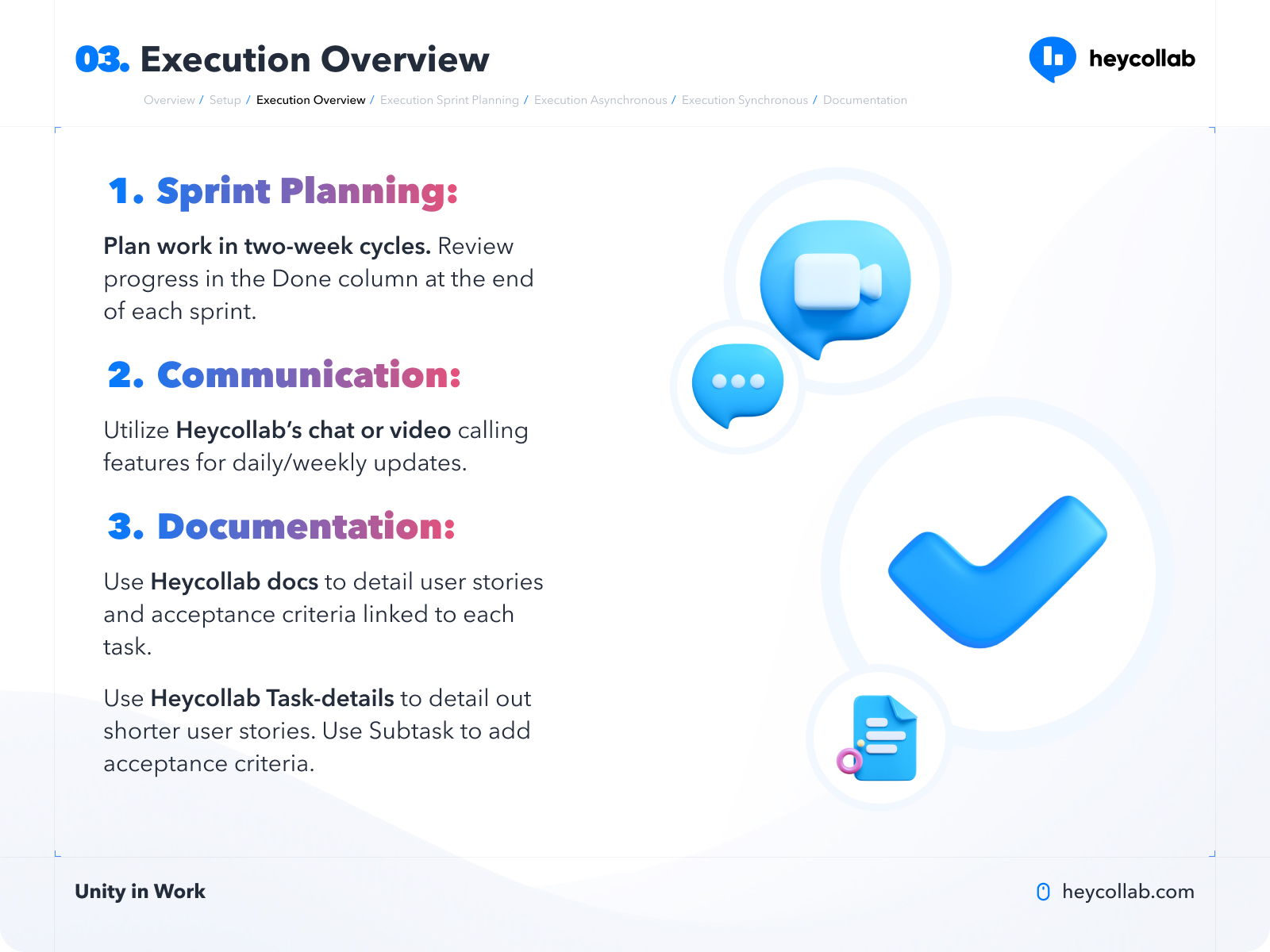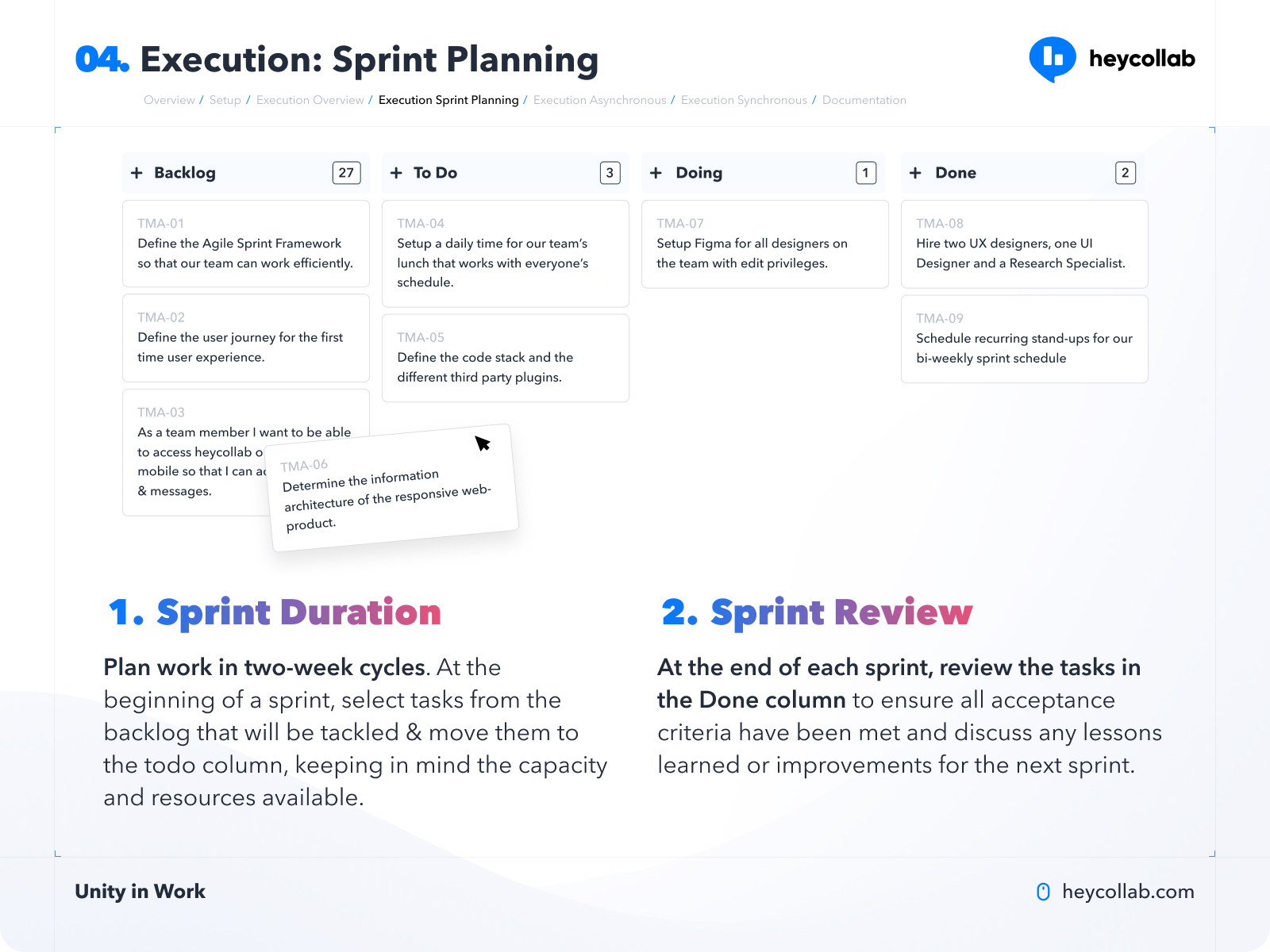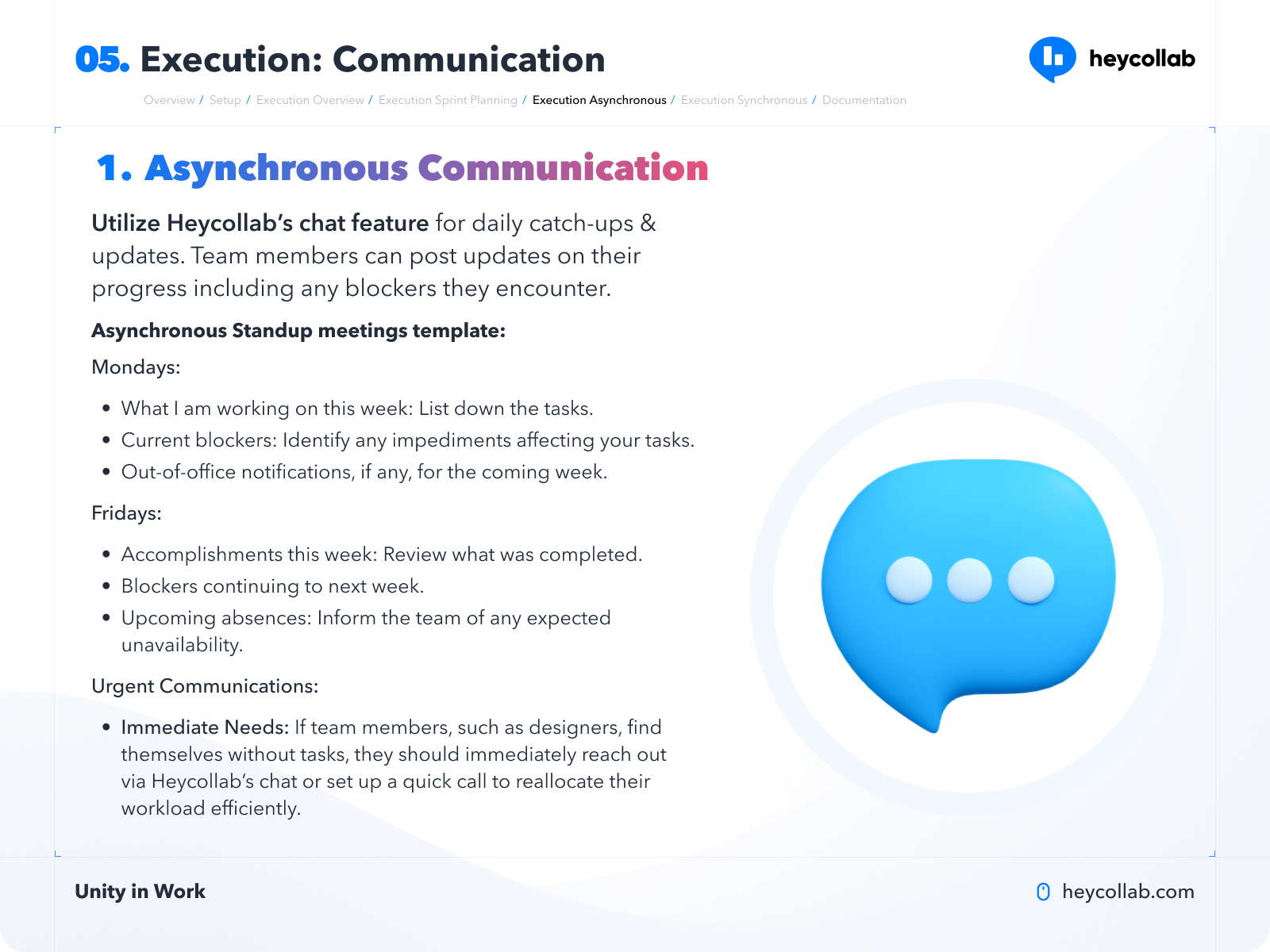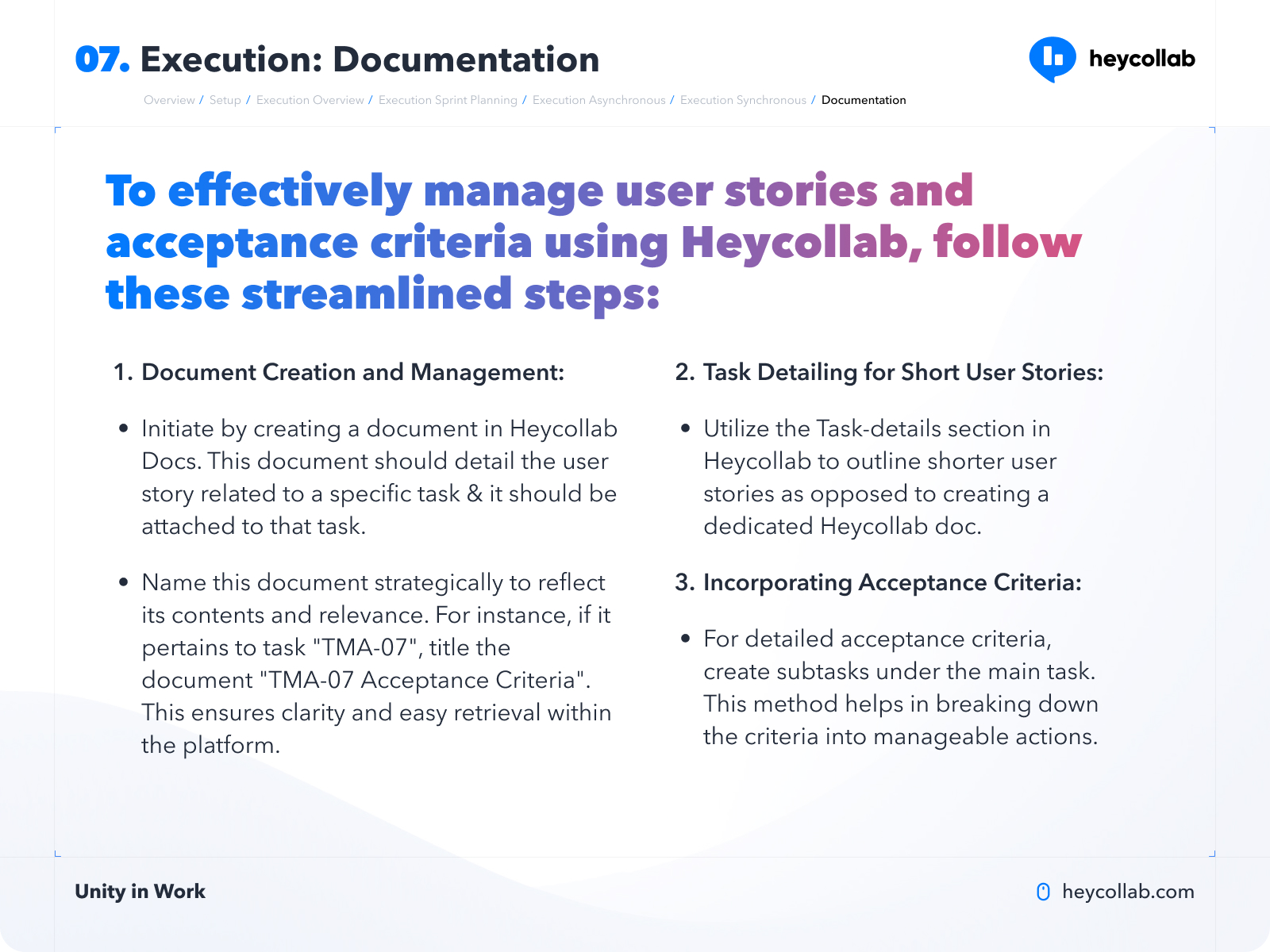Overview of the Agile Sprint Framework
The Agile Sprint Framework is an iterative approach to project management that organizes tasks into short cycles called “sprints.” It is designed to provide a structured yet flexible process that enables teams to adapt to changing requirements and deliver functional outputs at regular intervals. This method is particularly effective in projects where quick market entry, ongoing feedback, and iterative design are crucial.
Setup Phase

1. Create Workspace:
- Naming: Identify your workspace with a project-specific name to keep all related activities consolidated.
- Columns Setup: Configure your workspace with four columns: Backlog, To Do, In Progress, and Done. This setup helps track the lifecycle of each task from pending to completed.
2. Task Organization:
- Populate the ‘To Do’ column with tasks identified during the sprint planning session. These tasks are pulled from a broader ‘Backlog’ which contains all upcoming tasks.
- Limit the ‘In Progress’ column to a manageable number of tasks to ensure focused attention and higher productivity.
Execution Phase

1. Daily Stand-Ups:
Utilize Heycollab’s chat or video calling features to conduct brief daily meetings. These are crucial for discussing progress, addressing any blockers, and realigning tasks among team members.
2. Sprint Cycles:

- Organize work into two-week sprints. This period is long enough to produce a substantial output but short enough to maintain urgency and momentum.
- At the end of each sprint, review the ‘Done’ column to assess which tasks have been completed successfully and reflect on the sprint’s outcomes.
3. Documentation:
- Use Heycollab Docs to create detailed documents for user stories and acceptance criteria for each task. Link these documents directly to the tasks for easy reference.
- Employ subtasks to break down complex tasks into smaller, more manageable components, each with its own acceptance criteria.
Benefits of Adopting the Agile Sprint Framework
1. Increased Flexibility and Adaptability: Rapid sprints enable adjustments based on feedback and changing conditions, making the framework ideal for projects in dynamic environments.
2. Enhanced Productivity: Focusing on a limited number of tasks within each sprint promotes concentrated effort and minimizes waste, leading to more efficient use of time and resources.
3. Improved Stakeholder Engagement: Regular sprint reviews involve stakeholders and keep them informed about the project’s progress, ensuring the final product aligns with their expectations.
4. Better Risk Management: Continuous reviews allow for early risk detection and mitigation, which can prevent larger issues down the line.
5. Higher Team Morale: Short sprints lead to frequent achievements, boosting morale and motivating the team through a sense of continuous accomplishment.
6. Clearer Visibility and Accountability: The structured nature of Agile sprints offers transparency into the workflow, making it easier to track responsibilities and progress.
7. Continual Improvement: The retrospective phase of each sprint encourages ongoing refinement of processes, which can lead to sustained enhancements in workflow and product quality.
Implementing Agile Sprints in Heycollab
Work Management
Workspace Setup: Clearly define the workspace with relevant columns and integrate all tasks accordingly. This setup helps in visually managing the flow of tasks across different stages of the sprint.
Communication

Daily Stand-Ups: Implement asynchronous updates through Heycollab’s chat for daily progress checks and synchronous weekly video calls to discuss more complex issues or adjustments.

Documentation

Documentation and Files: Utilize Heycollab Docs for creating and storing all project-related documentation. Link these documents to specific tasks or subtasks for seamless access and organization.
File Organization
Structured Storage: Organize all project-related files in designated folders within Heycollab. Use tags and version control to keep files organized and accessible to all team members, ensuring that everyone has the latest information at their fingertips.

